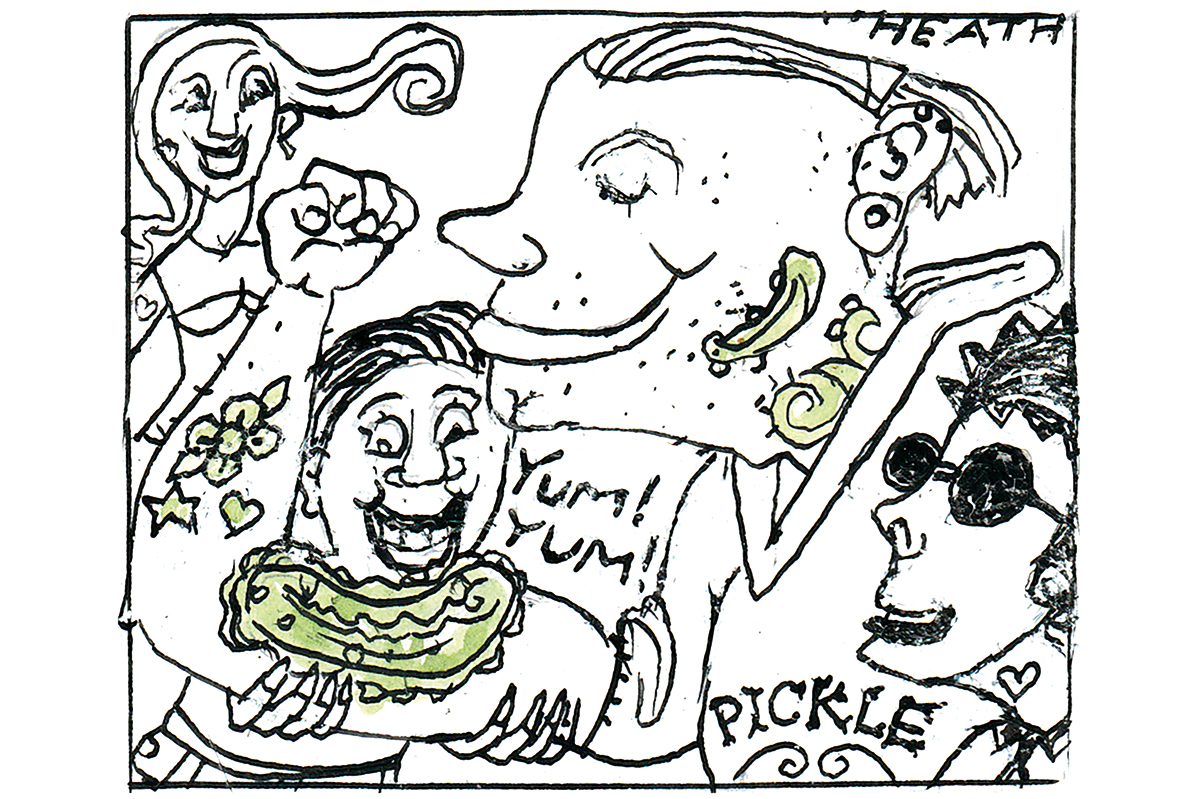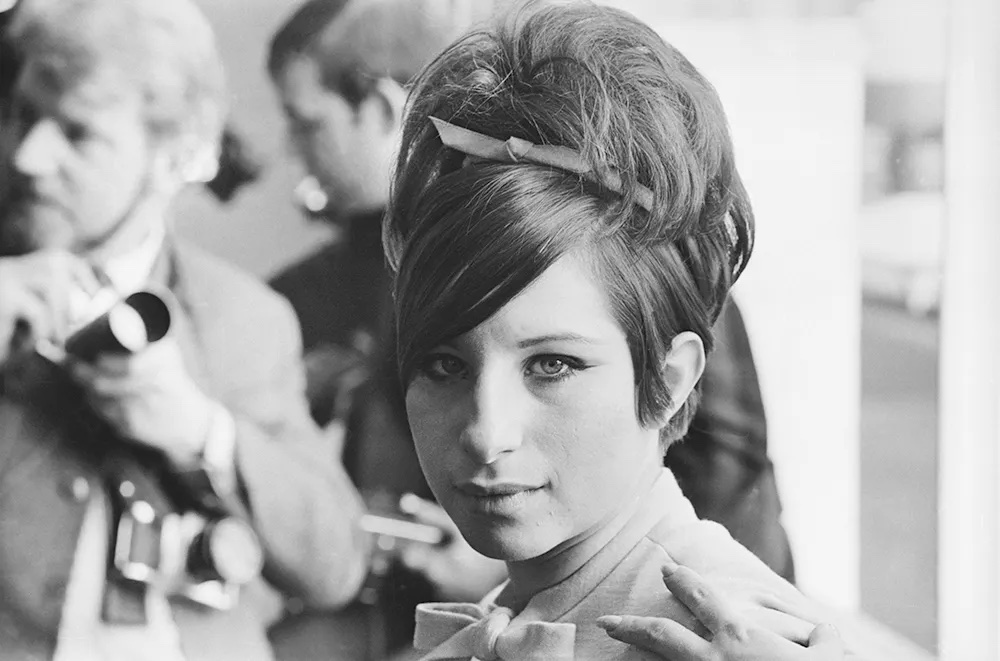The tradwife smiles as she feeds her sourdough starter, wearing a long dress and a baby and wrangling the occasional toddler underfoot. She beams at her husband as he comes in from a long day on the ranch, or from the hedge-fund trenches. She makes salt-dough modeling clay for the little ones, whether her stove is from Lowe’s or La Cornue. The Cut describes her Instagram account as both “dangerous” and “stupid.” CNN experts lament that too many girls are turning to her as a “Band-Aid with ideological cover,” and fret about the sourdough-starter-to-White-Supremacy pipeline. Tradwives, both self-identified and smacked with admiring or hostile labels, are the latest cultural phenomenon in media crosshairs.
And no one agrees whom they’re arguing about in the first place. The term is online shorthand for “traditional wife,” which translates to a woman who performs all the tasks your grandmother once did but with access to infinite camera filters and no shag carpet. Most seem to be selling an aesthetic family ideal rather than sex, although some of the bouncing is, let’s say, a little too calculated.
You would think that would be just fine with the newsrooms that once championed OnlyFans for empowering women in lockdown. But reporters have become unhinged at the prospect of seeing tradwifery emerge from the outposts of YouTube and TikTok and spread to the mainstream — particularly to and within Generation Z. The justification offered for this rage is usually that they make the expensive and difficult look easy and natural, setting up impossible expectations. The homes featured on TikTok are suspiciously free of crayon wall art and their stoves cost more than a year’s rent. But I remain unconvinced.
The latest tradwife flap involves the popular Ballerina Farm account (nearly 9 million followers on Instagram and 7 million on TikTok), run by Hannah Neeleman. Mrs. Neeleman seems to be a fashion-model beauty married to a wealthy man who dares to apply those gifts to her eight children and a homestead rather than eight yachts in Capri. She’s further enraged everyone by looking good enough twelve days post-partum to participate in beauty pageant activities (Neeleman is the current Mrs. American, which I was surprised to discover is Miss America for the married set).
Pop trad content seems to set people off in a way that the similarly unattainable “normal” lifestyles of the rich and famous do not — beachside villas in St. Barts do not inspire the wrath homemade bread seems to. Nobody thinks that Ferraris set up impossible expectations for your Kia-driving experience. Everyone knows the pasta-snogging models aren’t actually eating that way. It’s illusion all the way down — and the viewer is in on the con.
But I suspect there’s more to the specific vitriol toward the tradwife niche than the haters are letting on. It’s not the fact that tradwife accounts are presenting an aspirational vision, as most influencer accounts do, but exactly what they and their followers consider aspirational that is causing the backlash. A more plausible explanation is that people intuitively sense this kind of lifestyle somehow ought not to be expensive and out of reach — that having a family, a home and food that isn’t chemical slop on the table ought not to be a luxury product in a wealthy society. There’s a misdirection of anger toward wealthy homesteaders when people realize that they can only afford what the average medieval peasant, for all his other travails, considered fairly standard.
Of course, it’s entirely possible to make healthy homecooked meals on a stovetop that doesn’t compete in price with a BMW. But as none other than pre-insufferable Elizabeth Warren pointed out in her Two-Income Trap, the 1950s are not just a culturally nostalgic decade for conservatives; they’re an economically nostalgic decade for anyone who hopes to support three kids and a spouse on a single income.
It’s not just financial barriers that make the retreat to Ballerina Farm life appear annoyingly inaccessible, however. Family life itself seems like an unattainable prize dangled just beyond their grasp.
Millennial women are turning forty unmarried and without children in record numbers — this despite the absence of a world war or plague robbing them of suitors. And the slightly younger Gen Z’s family formation trajectory, at least in the aggregate, looks even bleaker. Dating is collapsing, alongside friendship and all forms of non-digitally mediated relationships. Even sex itself — the great promise of the Sexual Revolution — is becoming a rarer and more elite experience as our social structures revert to something that looks more like nomadic tribal life, with no obligation to continue to support discarded concubines.
Difficult as it is to talk about, there’s a palpable fear among many in my generation and older that some subset of younger women might really be holding the tradwife up as a role model and attempting to avoid our mistakes. What if they don’t spend their twenties Eat/Pray/Loving — and that actually makes them happy? It’s never fun to be a cautionary tale; the only thing worse is to be one alone.
In this context, Hannah Neeleman’s apparent ability to make delectable cinnamon rolls without chipping her manicure seems like a cruel mockery, a glimpse of a life that’s both culturally and economically out of reach, sold back to us as a luxury product. Finding something wrong, hypocritical or just false about tradwife life becomes a psychological necessity.
Homesteader Beth Gantz responds to the tradwife trend in the Cut: “People turned to these [traditional ways of living] out of necessity. To do things in the most expensive and beautiful way possible just feels super icky to me.” Fair enough so far as it goes, but she continues with a jab at the alleged incompatibility between homesteading and conservative values which points to the real fear: these women are just making home life look as beautifully appealing and aspirational as the girlboss grind did for offices a decade ago.
No one would be mad at Hannah Neeleman if she had pursued the career as a ballerina to which her Juilliard training entitles her, making it seem equally glamorous and beautiful as she now makes family life appear. As Lana Del Rey famously responded to critics who said she was glamorizing abusive relationships with men, “I’m just a glamorous person singing about [my] realities.” Anything Mrs. Neeleman did with her life would seem envy-worthy by virtue of her beauty and talents; why are we especially mad this is what she’s chosen?
The danger of the tradwives is precisely that their aesthetic appeal is deployed on behalf of traditional family arrangements, even if those paeans are themselves a performance. Nobody got mad about 2000s rockabilly culture, which also expressly borrowed the aesthetic of the 1950s while loudly condemning that decade’s values. Our society dictates that the populace celebrate every subculture and perversion that reality TV producers uncover. That this particular little niche engenders such blowback says a lot — not about the tradwives, but about us.
For those born after the cultural revolution of the Sixties and Seventies, the broken home — whether from divorce or because they were born to parents who never married to begin with — is the norm. Plunging family size means fewer siblings as well. The vision of home life presented by those trad accounts with children is not only a reflection of what many of their critics have failed to attain in their own lives, it never existed for them in their own childhoods, which makes it easy to deride as a complete illusion.
But it really does say something about the culture that the most obvious and basic feminine instincts — to make a beautiful home and have a family — can only find an outlet as a niche subculture for an online audience, infused with fetishization, politics and angry thinkpieces.
I might have been inclined to view the rise of the tradwives as the final nail in the coffin for real traditionalism, a defanged enemy resurrected only as one of an ever-proliferating number of aesthetic subcultures that serve the same personality test function for Gen Z as BuzzFeed quizzes asking, “which Mean Girls character are you?” served for millennials.
To be fair to some of the critics, it’s true that some “trad” accounts seem little more than barely disguised OnlyFans, selling a decidedly sex-tinged, fetishized version of 1950s domesticity. The illusion is made all the more contradictory by its reliance on a horny male audience (and weirdly digitally absent husbands) for clicks and money. And even those that aren’t literally pornographic often tend in that direction insofar as they sell the intimate, the interior, the truly domestic as a consumable product. As any good sex worker will tell you — and a few of the newly minted tradposters, such as Gwen the Milkmaid, are — that’s the real trick.
But the rage this trend inspires above and beyond so many others — CNN notes that there may well be more angry reactions using the hashtag than posts from tradwives themselves — makes me hopeful that the tradwives are just the facade masking a deeper cultural reconsideration. If so, it’s a reconsideration not sparked by anything directly political but instead by the quite literal dead end of the girlboss age. The grinding loneliness of lockdowns stripped the corporate lifestyle of its mythic allure for young women. The social media presence that stood up the girlboss lifestyle — the air-brushed photos of vacations to exotic locales, the perfectly backlit woman bearing a Stockholm-syndrome smile at a company happy hour — appear hollow when the next image on your timeline shows a seven-year-old beaming at her mother.
The grifters of tradwifery may be annoying to stay-at-home-moms wondering where the glamour is in changing diapers, but they’re an indication of the aspirational popularity of the underlying image: you can’t make a quick buck off an unpopular schtick. And we need inspiration and mimetic archetypes, which make even imagining a more traditional home life seem conceivable in a world designed to make it seem impossible.
If we’re going to live in a digital world, we’re going to need a flattened-out archetype of our own, one that at least points toward what are ultimately much deeper rewards than monetization can buy. While she continues to blur the line between private and public, the intimate and the town square, to the detriment of IRL traditional life, it’s better to have the tradwife than not to have her. I embrace her. Just don’t put her in a poorly lit calendar.
This article was originally published in The Spectator’s March 2024 World edition.























Leave a Reply